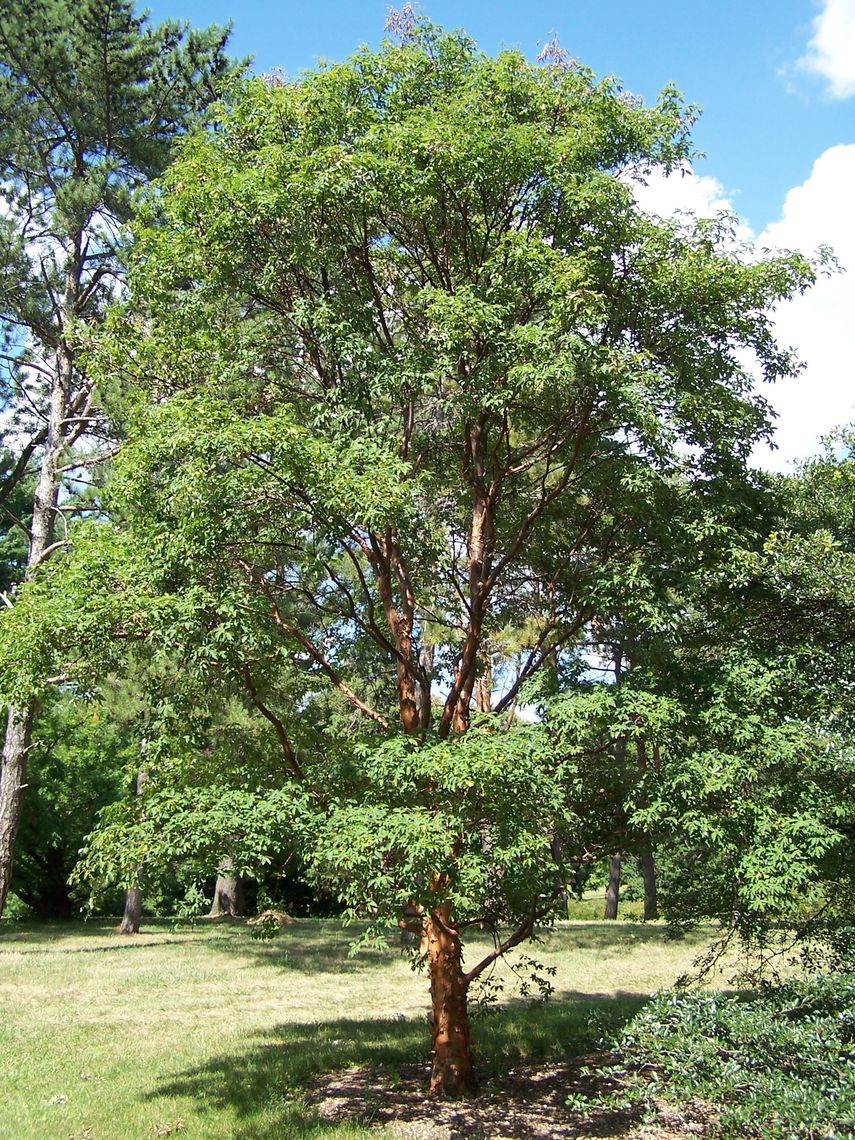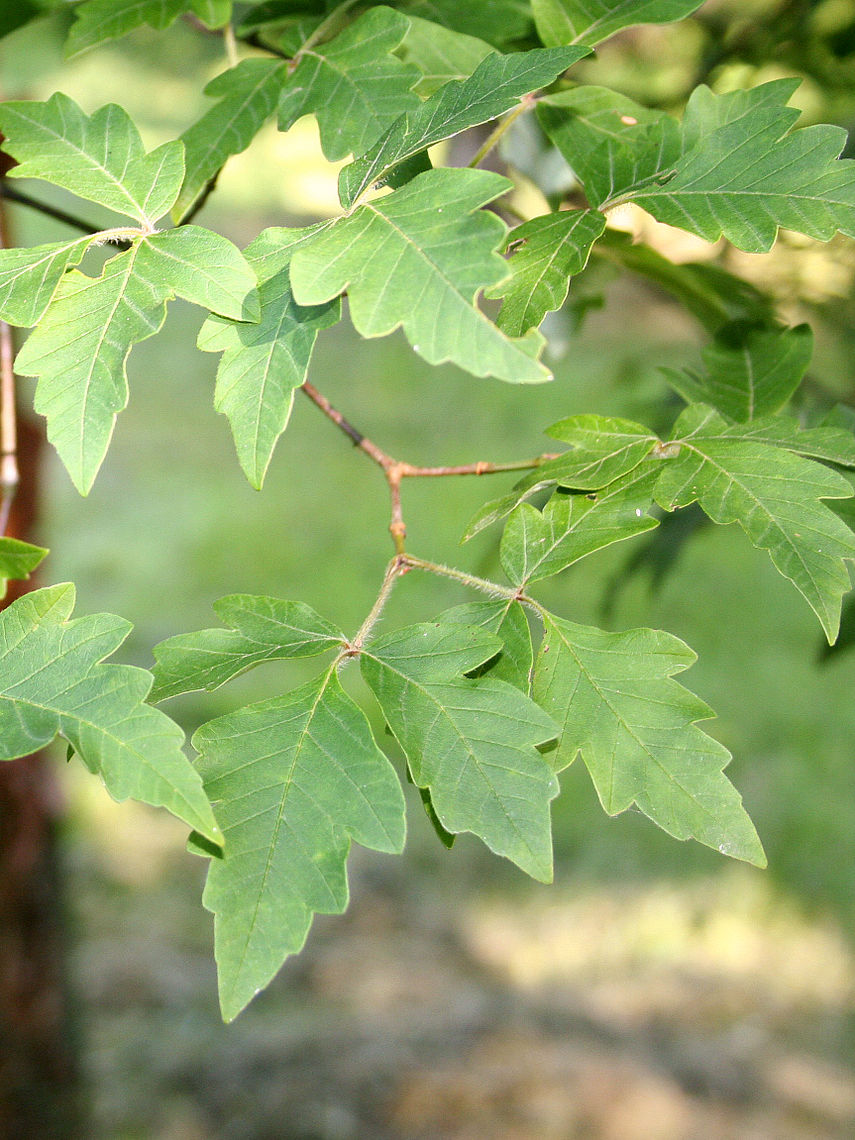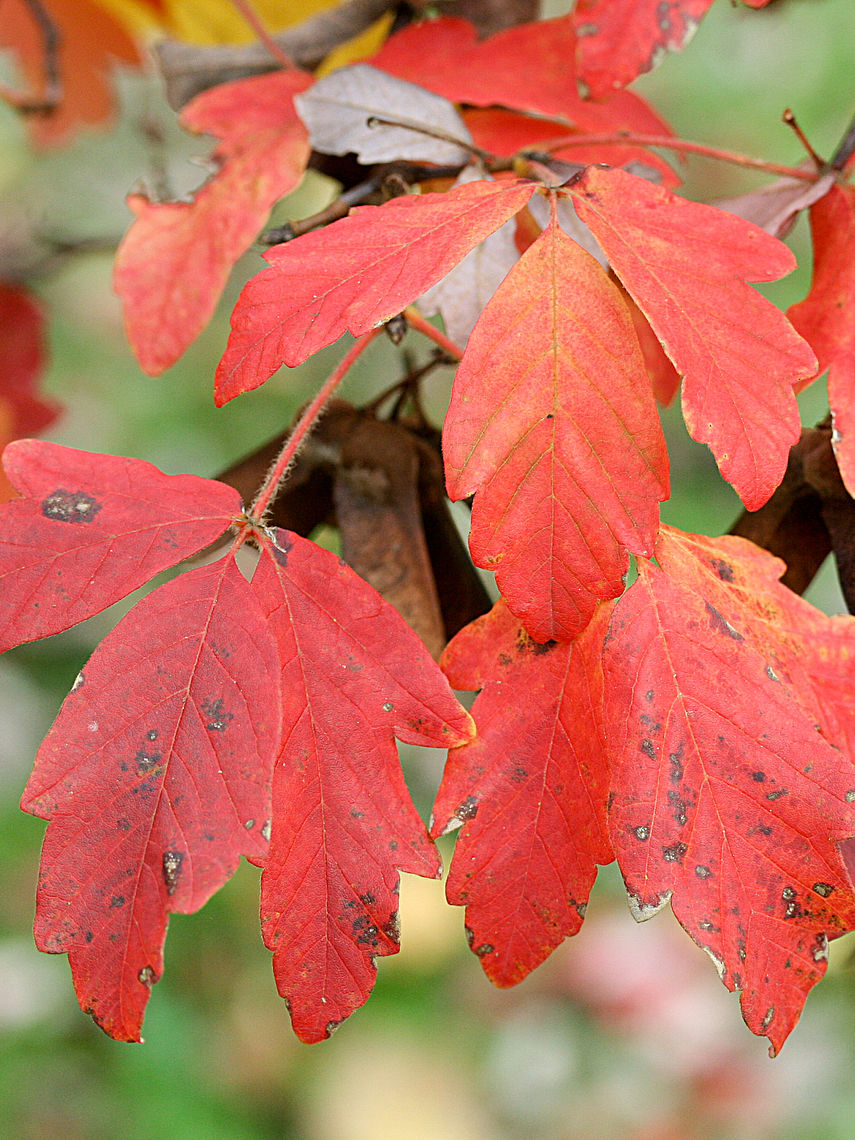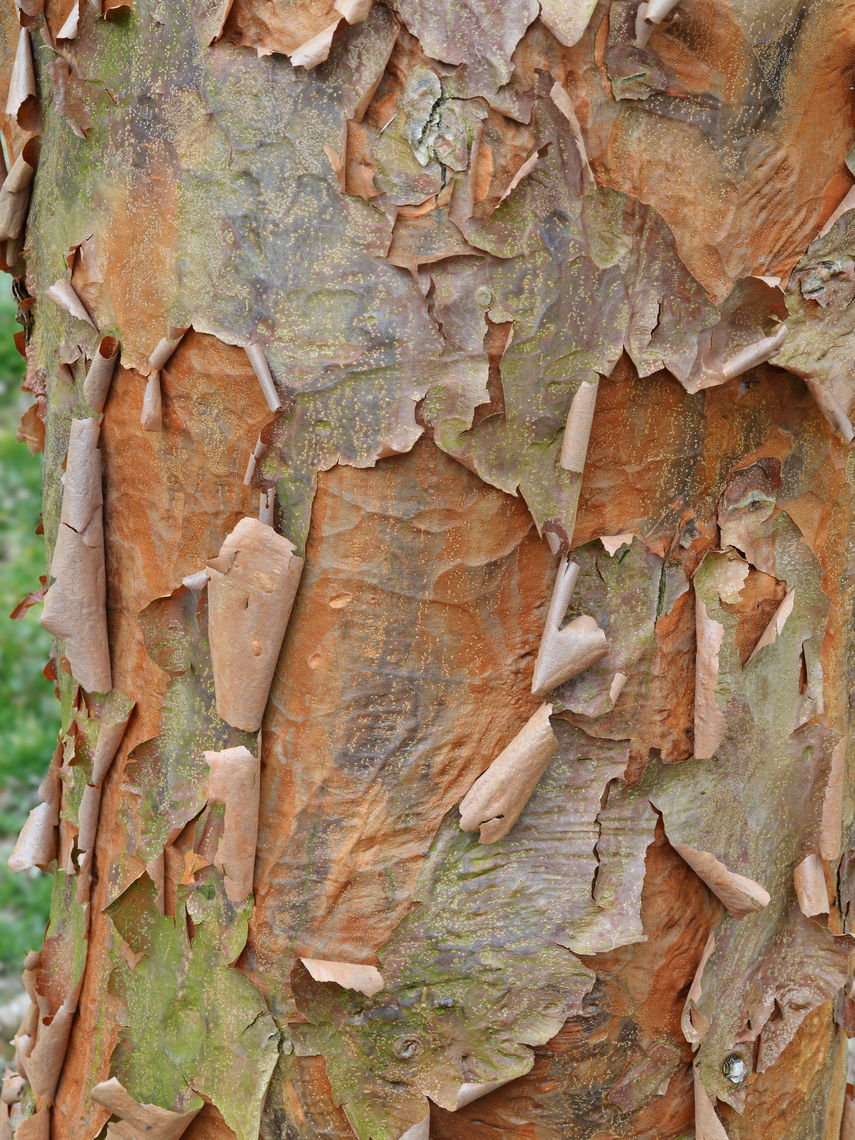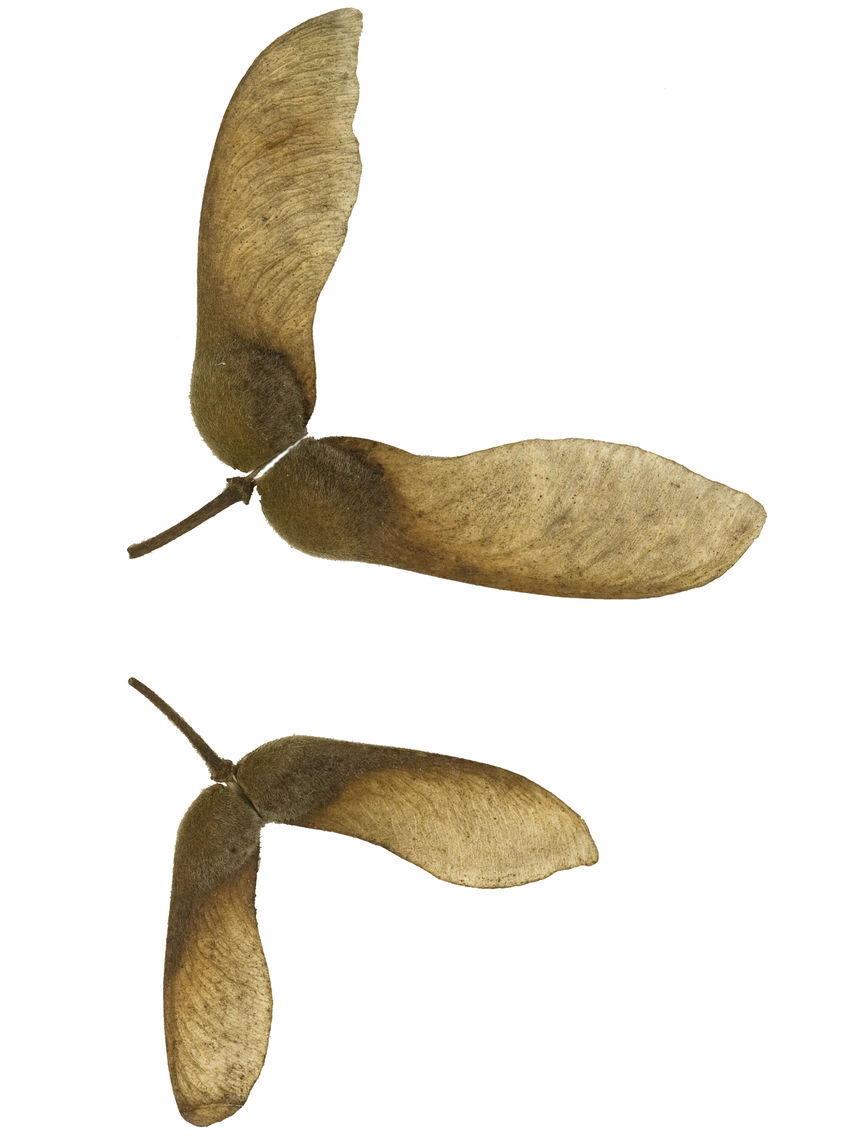Paperbark Maple (Acer griseum)
The paperbark maple is most noted for its cinnamon-colored bark that peels into large paper-like strips, hence its common name. The tree's leaves are blue-green to dark green, turning bright red in the fall, and composed of three leaflets. This tree attracts insect pollinators
Family: Aceraceae (Maple)
Characteristics: The dark green to blue green leaves are trifoliate (composed of 3 leaflets) and each leaflet is 3-6 inches long. In the fall, leaves turn bright red. Bark is cinnamon colored and exfoliates profusely. Like all maples, the paperbark maple produces samaras (paired winged fruits). This tree has a rounded shape. It grows 20-30 feet high and wide.
Foliage: Deciduous (leaves lost seasonally)
Geographic Origin: Central China (non-native)
Cultivation Notes: Requires low maintenance. Does best in full sun to part-shade. Prefers slightly acidic, medium moist, and well-drained soils. This tree is highly tolerant to both acidic and alkaline soils. It may be difficult to propagate or transplant, due to its poor seed quality and difficulty
Number on Campus: 3
Sources: Dirr, Morton Arboretum, Missouri Botanical Garden

